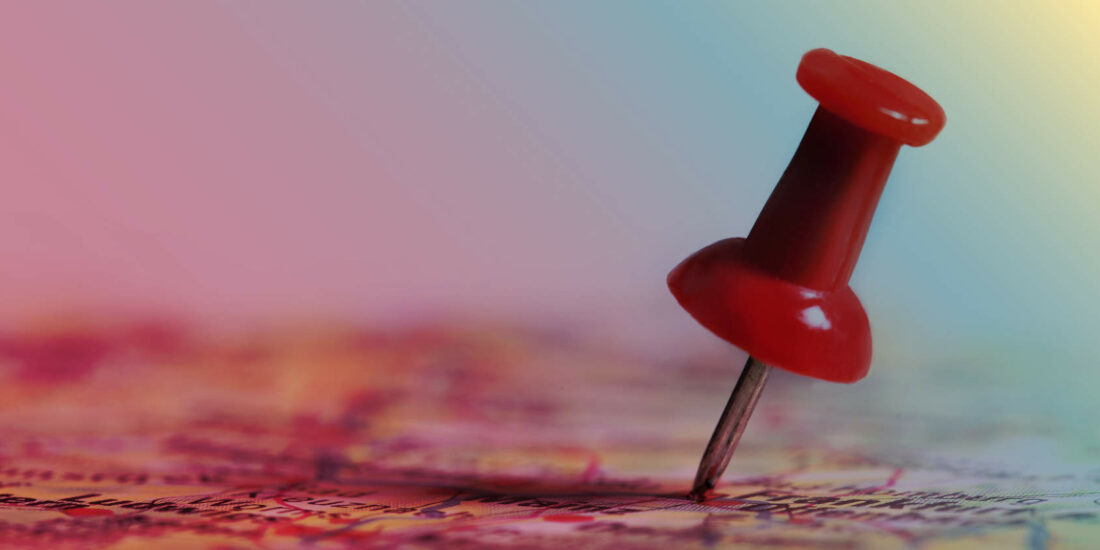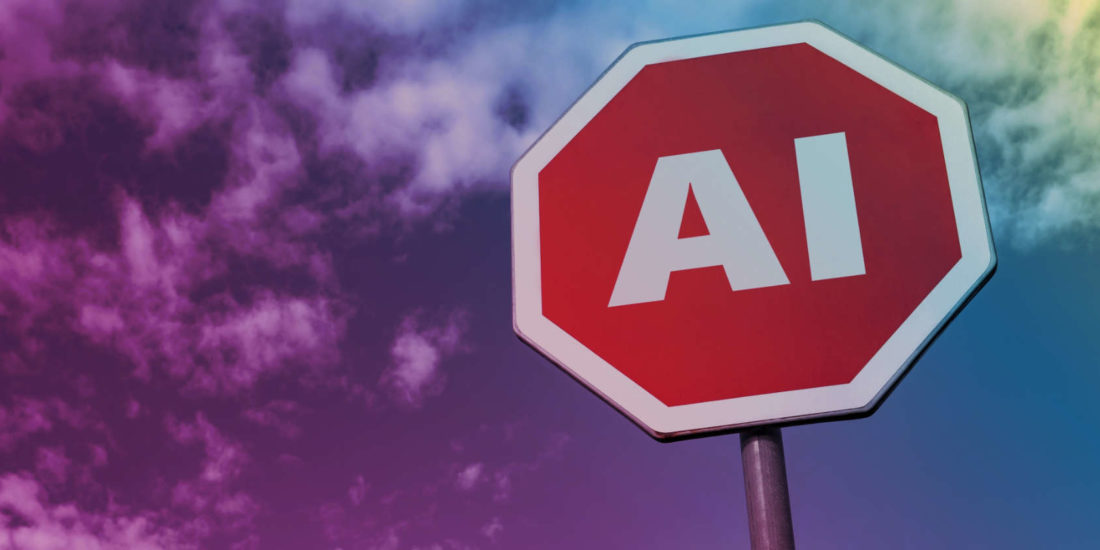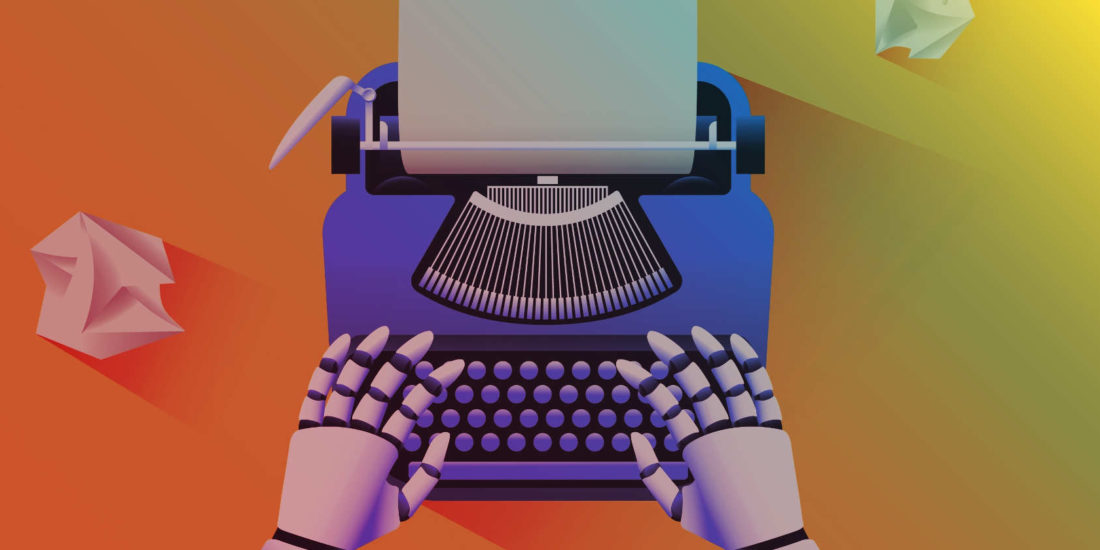
Should Singapore’s Courts Interpret Copyright Laws Expansively to Accommodate New Technological Developments?
Courts over the world have been grappling with the boundaries of copyright law with the advent of new technologies. This article evaluates whether Singapore’s courts should interpret copyright laws expansively to accommodate new technological developments. This article starts by evaluating site-blocking orders in Singapore and next explores the approaches taken by the courts of various jurisdictions, such as the United States and China. Lastly, this article recommends the general stance that Singapore courts should adopt if a novel question relating to the intersection of copyright and emerging technologies arises in the future.
I. Introduction
As the digital landscape evolves, new technologies continue to challenge the boundaries of copyright law. The legal response to technology has usually been lagging on two fronts: (1) legislative and (2) judicial.1Warren B Chik and Saw Cheng Lim, Information and Communications Technology Law in Singapore (June 2020) at (10.001). Where legislation is hard-pressed to keep up because technology advances at full throttle, the courts have flexibility in law-making in copyright law. Even as Singapore is expected to reform the copyright legislation very soon,2Channel NewsAsia, Ministry of Law and IPOS seek public feedback on draft Copyright Bill (5 February 2021), https://www.channelnewsasia.com/news/singapore/ministry-of-law-and-ipos-seek-public-feedback-on-draft-copyright-14118456, (accessed 3 March 2021). judges will continue to grapple with the legislation to uphold one of the main purposes of copyright law: to promote science and the arts. Singapore’s courts should not interpret copyright laws expansively to accommodate new technological developments because certain causes of action could lie outside the law of copyright.
II. Evaluating Site-blocking Orders: Rights Conferred to Copyright Owners Have Been Extended Readily in Singapore in This Limited Circumstance
Under section 193DDA of the Singapore Copyright Act, a copyright owner or an exclusive licensee may make an application to the High Court for an order against a network service provider (NSP) to “take reasonable steps to disable access” to a “flagrantly infringing online location”,3Id, at (10.079). in cases where the services of the NSP “have been or are being used to access that online location to commit or facilitate copyright infringement”.4Ibid. In the recent High Court decision of Disney Enterprises Inc v M1 Ltd,5(2018) 5 SLR 1318 the plaintiffs sought for a “main injunction” and a “dynamic injunction” to protect their copyrighted works by covering not only an identified list of infringing websites, but also any other potential infringing websites that might have circumvented the “main injunction” through the changing of “domain names, URLs and/or IP addresses of the infringing websites”.6Supra n 1 at (10.080). The Court held that it had “no hesitation in granting both types of injunction” after an evaluation of section 193DDA and held that ordering both injunctions would provide a “practical means” of ensuring the continued effectiveness of the main injunction through “an expedited process” to save time and costs, and that there were “sufficient safeguards” in place “to prevent an abuse of the dynamic injunction by the plaintiffs”.
In addition, in an unreported judgment, the Singapore High Court made “similar orders against NSPs to block user access to eight authentication server domains that were associated with applications installed on TV set-top boxes which allowed users to stream pirated content from third-party websites”.7Channel NewsAsia, High Court Orders Internet Service Providers to Block Access to TV Box Apps (23 November 2018), https://www.channelnewsasia.com/news/singapore/high-court-orders-internet-service-providers-block-access-tv-box-10962528#:~:text=SINGAPORE%3A%20The%20High%20Court%20has,shows%20and%20live%20sports%20channels., (accessed 3 March 2021). The High Court’s readiness to grant a “dynamic” injunction had arguably “stifle[d] technological advances which are in the public’s interest” and leaned too much in favour of the interests of copyright owners. Regardless, it is noted that the judicial approach in Singapore in relation to the grant of dynamic injunctions mirrors that in the United Kingdom,8Supra n 1 at (10.082). and this shows the willingness of the courts to act appropriately to protect the copyright owners’ interests, even if the legislation might not be clear on the boundaries of what the courts can do.
III. Courts Have Been Cautious to Expand Even the “Exclusive Database Right”
Companies that seek to obtain copyright protection for a database will have to consider the originality in the selection, coordination or arrangement of the database and document their innovative processes during the construction of the database, bearing in mind that copyright law does not protect the ideas underlying the database and that usually, a thin copyright protection will be accorded to the database. This standard was iterated in the American landmark case of Feist Publications, Inc., v. Rural Telephone Service Company, Inc and endorsed in Singapore,9Global Yellow Pages Ltd v Promedia Directories Pte Ltd and another matter (2017) SGCA 28 at (15). where both jurisdictions do not recognise a sui generis database right.
A document published by the European Commission, which raised the possibility of creating a data producer’s right,10European Commission, Staff Working Document on the free flow of data and emerging issues of the European data economy, Brussels, 10 January 2017, SWD (2017) 2 final, 33-38. See also European Commission, Building A European Data Economy, Communication from the Commission to the European Parliament, the Council, the European Economic and Social Committee and the Committee of the Regions, 10 January 2017, COM (2017) 9 final, 13. confirmed that data generated by machines are protected neither by copyright nor by the sui generis database right. The document noted that “the [EU Database Directive (the Directive)]11EU Database Directive 96/9/EC of the European Parliament and of the Council of 11 March 1996 on the legal protection of databases. did not intend to create a new right in the data. The Court of Justice of the European Union thus held that neither the copyright protection provided for by the Directive nor the sui generis right aim at protecting the content of databases. Furthermore, the European Court of Justice has specified that the investment in the creation of data should not be taken into account when deciding whether a database can receive protection under the sui generis right”.12Id, at 20. These show the courts’ reluctance to readily expand the scope of copyright subsistence (and separately, even the sui generis right) in databases even as computer-generated works become increasingly prevalent because the expansive provision of such rights might result in “big data” lying in the hands of several large technology companies.
IV. Limitations of Copyright Law in Computer-generated Works Has Been Met With the Chinese Courts Looking at Other Areas of Law to Protect Interests of Parties Involved
The thorny issues of copyright ownership, copyright subsistence, and authorship in computer-generated works have manifested in courts being reluctant to enlarge the scope of copyright law expansively. In China’s case of Feilin v Baidu, the texts and drawings in the “Analytic Report on the Judicial Big Data in the Film & Entertainment Industry in Beijing” were generated by artificial intelligence (AI). While the Court mentioned that there was no copyright subsistence in the AI-generated outputs (as there were no authors for these AI-generated works),13See generally, Kan He, Feilin v. Baidu: Beijing Internet Court tackles protection of AI/software-generated work and holds that copyright only vests in works by human authors (9 November 2019), https://ipkitten.blogspot.com/2019/11/feilin-v-baidu-beijing-internet-court.html, (accessed 8 October 2020). the fact that Feilin had modified the AI-generated outputs & manually coloured the drawings made the work copyrightable.14Pamela Samuelson, AI Authorship? (Communications of the ACM, Vol. 63 No. 7) (July 2020), at 20-22. In the later case of Shenzhen Tencent v Shanghai Yinxun (Shenzhen), an article on the stock market was produced by Dreamwriter, an AI writing software. The Court in Shenzhen held that the work was copyrightable by the firm that developed the software because there was human involvement, and declared the Plaintiff to be the author according to Article 11 of the Chinese copyright law which grants authorship to the entity under whose supervision and direction the work was created.15See generally, SpicyIP, Shenzen Tencent v. Shanghai Yinxun: AI Authors, Copyright and Some (Hard) Lessons for India (8 August 2020), https://spicyip.com/2020/08/shenzen-tencent-v-shanghai-yinxun-ai-authors-copyright-and-some-hard-lessons-for-india.html, (accessed 8 October 2020). On the other hand, in the United States, the Naruto v Slater case16Naruto v. Slater, No. 16-15469 (9th Cir. 2018). has been widely cited in relation to works generated by software or non-humans, and the Court held that the monkey selfie was not copyrightable because there was no human author. Commentators have argued that the same principle will be extended to non-human computer and AI systems in the United States.
Notably, China offered anti-copying protection under the General Principle17Article 2 of the Anti-unfair Competition Law. of the Anti-unfair Competition Law for complicated cases involving new technologies. The Anti-unfair Competition Law regulates the conduct of business operators by prohibiting them from damaging the interests of their competitors with the requirement to observe “business ethics”. To initiate a cause of action under unfair competition law, the entity would have to prove that the “lawful rights and interests” have been infringed, with the competitive advantages being damaged. In the case of Taobao v Anhui Meijing,18Taobao (China) Software Co., Ltd. v. Anhui Meijing Information Technology Co., Ltd. Taobao sued Anhui Meijing for unfair competition.19Guanbin Xie and Bin Zhang, Competition law could give better protection to big data than copyright law (22 March 2019), https://www.managingip.com/article/b1kblzh0qht8gh/competition-law-could-give-better-protection-to-big-data-than-copyright-law, (accessed 8 October 2020). Taobao had developed its business consulting service and a specific algorithm to incorporate and interpret raw data, supplying e-commerce merchants with a big data service derivative.20Ibid. Anhui Meijing ran an online portal “scraping” evaluated data from Taobao’s operations. The Court ruled that unfair competition had arisen as the service and its derived data were the product of Taobao’s labour and Anhui Meijing unfairly obtained Taobao’s data against business ethics.21Ibid. The Chinese courts often make their decisions after considering whether there were efforts used to collect and process data and establish unfair competition, whether there was competition between the litigants, unfair actions, and the quantification of losses caused by those unfair acts.22Ibid. Regarding the protection of big data products, the Chinese courts looked at other areas of laws outside of copyright to balance the interests of different parties; this should not be too different for other jurisdictions where recourse is available under competition law or the law of confidence.
V. Regardless, Decisions on Fair Use in Copyright Infringement on the Internet Have Shown the Court’s Ability to Balance the Interests of Copyright Owners and the Public
The doctrine of fair use, which has been commonly litigated upon in the United States and embodied in 17 U.S. Code §107, excuses a certain act of copyright infringement from liability. The concept of “transformative purposes” has proven to be one of the integral factors in the fair use analysis, and the courts in the United States have been grappling with the open-ended legislation for many years.
In Authors Guild, Inc. v. Google Inc. (Authors),23804 F.3d 202 (2nd Cir. 2015). the Second Circuit agreed with the district court’s ruling that Google’s digitisation and subsequent use of the copyrighted works had amounted to fair use. The circuit court found that “Google’s making of a digital copy to provide a search function … augments public knowledge by making available information about [p]laintiffs’ books without providing the public with a substantial substitute for matter protected by the [p]laintiffs’ copyright interests in the original works or derivatives of them.” The Court likewise found that “Google’s provision of digital copies to participating libraries, authorising them to make non-infringing uses, is non-infringing, and the mere speculative possibility that the libraries might allow use of their copies in an infringing manner does not make Google a contributory infringer.”
The Ninth Circuit in Perfect 10, Inc. v. Google Inc.24508 F.3d 1146 (9th Cir. 2007). turned to the issue of striking a balance between the value to the public of the transformative use and the degree to which Google’s use was commercial and superseded that of the author. It concluded that it was obliged to strike a balance, and held that the public benefit had the greater weight in this case.25Id, at 11 The Ninth Circuit found that the “transformativeness” outweighed the other fair use factors because “Google has provided a significant benefit to the public” in facilitating image searches by means of thumbnail images.26Supra n 24, at 13. This was in line with what was said in Kelly v. Arriba Soft Corporation,27336 F.3d 811 (9th Cir. 2003). where the Ninth Circuit essentially reduced the inquiry to the formula: “highly beneficial to public = transformative”.
VI. Conclusion
The Second Circuit in Authors rehashed succinctly the purpose of copyright: “The ultimate goal of copyright is to expand public knowledge and understanding, which copyright seeks to achieve by giving potential creators exclusive control over copying of their works, thus giving them a financial incentive to create informative, intellectually enriching works for public consumption.”28Supra n 23, at 12. In addition, “while authors are undoubtedly important intended beneficiaries of copyright, the ultimate, primary intended beneficiary is the public, whose access to knowledge copyright seeks to advance by providing rewards for authorship.” 29Supra n 23, at 13. Moreover, in the words of Lord Ellenborough back in 1802, “while I shall think myself bound to secure every man in the enjoyment of his copy-right, one must not put manacles upon science.” The crucial question is how to “define the boundary limit of the original author’s exclusive rights in order to best serve the overall objectives of the copyright law to expand public learning while protecting the incentives of authors to create for the public good.”30Supra n 23, at 15.
In my view, the Singapore Court of Appeal in RecordTV v MediaCorp31(2011) 1 SLR 830 at (69). was correct; unless the “statutory words clearly reflect the legislative policy on the extent of the rights to be conferred on the copyright owner, the courts should not be quick to interpret the statutory words expansively if doing so may stifle technological advances which are in the public’s interest”. Not only should the courts protect the interests of current creators and innovators, the interests of the members of the public (and potential creators and innovators) must also be considered and protected. Thus, courts should be slow to grant exclusive rights to new technological creations in the existing copyright regime and look at other areas of law to rectify any unjustness that cannot be resolved by copyright law. The monopolisation of new technologies must be avoided at all costs.
Endnotes
| ↑1 | Warren B Chik and Saw Cheng Lim, Information and Communications Technology Law in Singapore (June 2020) at (10.001). |
|---|---|
| ↑2 | Channel NewsAsia, Ministry of Law and IPOS seek public feedback on draft Copyright Bill (5 February 2021), https://www.channelnewsasia.com/news/singapore/ministry-of-law-and-ipos-seek-public-feedback-on-draft-copyright-14118456, (accessed 3 March 2021). |
| ↑3 | Id, at (10.079). |
| ↑4 | Ibid. |
| ↑5 | (2018) 5 SLR 1318 |
| ↑6 | Supra n 1 at (10.080). |
| ↑7 | Channel NewsAsia, High Court Orders Internet Service Providers to Block Access to TV Box Apps (23 November 2018), https://www.channelnewsasia.com/news/singapore/high-court-orders-internet-service-providers-block-access-tv-box-10962528#:~:text=SINGAPORE%3A%20The%20High%20Court%20has,shows%20and%20live%20sports%20channels., (accessed 3 March 2021). |
| ↑8 | Supra n 1 at (10.082). |
| ↑9 | Global Yellow Pages Ltd v Promedia Directories Pte Ltd and another matter (2017) SGCA 28 at (15). |
| ↑10 | European Commission, Staff Working Document on the free flow of data and emerging issues of the European data economy, Brussels, 10 January 2017, SWD (2017) 2 final, 33-38. See also European Commission, Building A European Data Economy, Communication from the Commission to the European Parliament, the Council, the European Economic and Social Committee and the Committee of the Regions, 10 January 2017, COM (2017) 9 final, 13. |
| ↑11 | EU Database Directive 96/9/EC of the European Parliament and of the Council of 11 March 1996 on the legal protection of databases. |
| ↑12 | Id, at 20. |
| ↑13 | See generally, Kan He, Feilin v. Baidu: Beijing Internet Court tackles protection of AI/software-generated work and holds that copyright only vests in works by human authors (9 November 2019), https://ipkitten.blogspot.com/2019/11/feilin-v-baidu-beijing-internet-court.html, (accessed 8 October 2020). |
| ↑14 | Pamela Samuelson, AI Authorship? (Communications of the ACM, Vol. 63 No. 7) (July 2020), at 20-22. |
| ↑15 | See generally, SpicyIP, Shenzen Tencent v. Shanghai Yinxun: AI Authors, Copyright and Some (Hard) Lessons for India (8 August 2020), https://spicyip.com/2020/08/shenzen-tencent-v-shanghai-yinxun-ai-authors-copyright-and-some-hard-lessons-for-india.html, (accessed 8 October 2020). |
| ↑16 | Naruto v. Slater, No. 16-15469 (9th Cir. 2018). |
| ↑17 | Article 2 of the Anti-unfair Competition Law. |
| ↑18 | Taobao (China) Software Co., Ltd. v. Anhui Meijing Information Technology Co., Ltd. |
| ↑19 | Guanbin Xie and Bin Zhang, Competition law could give better protection to big data than copyright law (22 March 2019), https://www.managingip.com/article/b1kblzh0qht8gh/competition-law-could-give-better-protection-to-big-data-than-copyright-law, (accessed 8 October 2020). |
| ↑20 | Ibid. |
| ↑21 | Ibid. |
| ↑22 | Ibid. |
| ↑23 | 804 F.3d 202 (2nd Cir. 2015). |
| ↑24 | 508 F.3d 1146 (9th Cir. 2007). |
| ↑25 | Id, at 11 |
| ↑26 | Supra n 24, at 13. |
| ↑27 | 336 F.3d 811 (9th Cir. 2003). |
| ↑28 | Supra n 23, at 12. |
| ↑29 | Supra n 23, at 13. |
| ↑30 | Supra n 23, at 15. |
| ↑31 | (2011) 1 SLR 830 at (69). |






